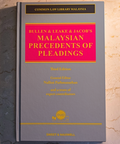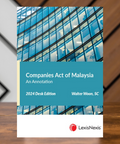![Malaysian Laws on Poisons and Sale of Drugs [As At 20th May 2025]](http://www.joshualegalartgallery.com/cdn/shop/files/2_f59ea69f-f313-41d3-a5fe-a25ace8d50d8.png?v=1750641200&width=480)
![Malaysian Laws on Poisons and Sale of Drugs [As At 20th May 2025]](http://www.joshualegalartgallery.com/cdn/shop/files/3_daa03167-299b-413e-b487-8cbacc580440.png?v=1750641200&width=480)
![Malaysian Laws on Poisons and Sale of Drugs [As At 20th May 2025]](http://www.joshualegalartgallery.com/cdn/shop/files/4_e843a4ef-d0c8-492e-b008-ee561ade6d04.png?v=1750641200&width=480)
![Malaysian Laws on Poisons and Sale of Drugs [As At 20th May 2025]](http://www.joshualegalartgallery.com/cdn/shop/files/cup_00b4b662-34be-4ac9-a096-9a6a29973d72.jpg?v=1750641200&width=480)
![Malaysian Laws on Poisons and Sale of Drugs [As At 20th May 2025]](http://www.joshualegalartgallery.com/cdn/shop/files/Untitleddesign_17_ad9bc85c-a0c0-4f1e-9400-2ad513df454f.png?v=1750641200&width=480)
Malaysian Laws on Poisons and Sale of Drugs [As At 20th May 2025]
Malaysian Laws on Poisons and Sale of Drugs
An Act to regulate the importation, possession, manufacture, compounding, storage, transport, sale and use of poisons.
Detailed Contents Of Malaysian Laws on Poisons and Sale of Drugs :
The laws governing the control and sale of poisons and drugs in Malaysia are the Poisons Act 1952 and the Dangerous Drugs Act 1952. These laws have been amended over time to address emerging issues related to the use, sale, and distribution of poisons and drugs.
Poisons Act 1952:
The Poisons Act 1952 regulates the manufacture, import, export, sale, and possession of poisons in Malaysia. The Act classifies poisons into three categories:
-
Schedule I poisons - These are highly toxic substances that are not used for medical purposes. Examples include cyanide, arsenic, and strychnine.
-
Schedule II poisons - These are substances that are used for medical purposes but can be harmful if not used correctly. Examples include morphine, cocaine, and codeine.
-
Schedule III poisons - These are substances that are used for medical purposes and are not considered to be harmful if used correctly. Examples include paracetamol and aspirin.
Under the Poisons Act 1952, it is illegal to manufacture, import, export, sell, or possess any Schedule I or II poison without a license. Schedule III poisons can be sold without a license, but sellers are required to keep records of all transactions.
The Act also requires all poisons to be labeled with a warning label indicating that the substance is a poison and the precautions that need to be taken when handling it. Failure to comply with these requirements is an offense and can result in fines, imprisonment, or both.
Dangerous Drugs Act 1952:
The Dangerous Drugs Act 1952 regulates the possession, manufacture, import, export, and trafficking of dangerous drugs in Malaysia. The Act classifies dangerous drugs into three categories:
-
Group A drugs - These are drugs that are considered to be highly addictive and have no recognized medical value. Examples include heroin, cocaine, and methamphetamine.
-
Group B drugs - These are drugs that are considered to be less addictive than Group A drugs but still have no recognized medical value. Examples include cannabis and ecstasy.
-
Group C drugs - These are drugs that have recognized medical value but can be abused if not used correctly. Examples include morphine, codeine, and methadone.
Under the Dangerous Drugs Act 1952, it is illegal to possess, manufacture, import, export, or traffic any Group A or Group B drug without a license. Group C drugs can be possessed and used for medical purposes, but a license is required for their manufacture, import, export, or trafficking.
The Act also provides for the establishment of the National Anti-Drug Agency (NADA) to coordinate efforts to prevent drug abuse and to provide rehabilitation services for drug addicts.
Penalties:
The penalties for offenses under the Poisons Act 1952 and the Dangerous Drugs Act 1952 can be severe. Offenders can face fines, imprisonment, or both, depending on the severity of the offense. In some cases, the death penalty can be imposed for offenses related to the trafficking of dangerous drugs.
Conclusion:
In summary, the Poisons Act 1952 and the Dangerous Drugs Act 1952 provide a framework for the control and sale of poisons and drugs in Malaysia. These laws are designed to protect the public from the harmful effects of poisons and drugs and to prevent their abuse. It is important for individuals and businesses involved in the manufacture, import, export, sale, or possession of poisons or drugs to comply with these laws to avoid the serious consequences of non-compliance.
Poisons and Sale of Drugs Contains:
Poisons Act 1952 (Act 366)
Poisons Regulations 1952
Poisons (Sodium Hydroxide) Regulations 1962
Poisons (Fees) Regulations 1983
Poisons (Psychotropic Substances) Regulations 1989
Poisons (Compounding of Offences) Regulations 2023
Sale of Drugs Act 1952 (Act 368)
Control of Drugs and Cosmetics Regulations 1984
Sale of Drugs (Certificate of Analysis) Regulations 1997
Registration of Pharmacists Act 1951 (Act 371)
Registration of Pharmacists Regulations 2004
Medicines (Advertisement and Sale) Act 1956 (Act 290)
Medicine Advertisements Board Regulations 1976
More statutes like Poisons and Sale of Drugs : Statutes

Latest releases
Get your copy today!
































